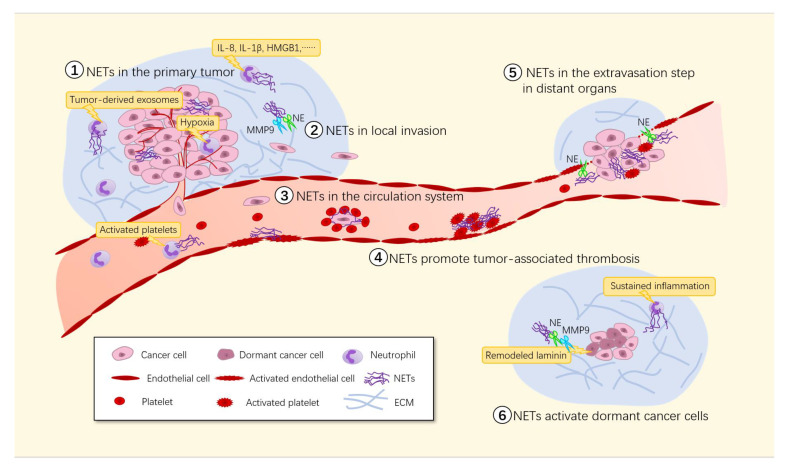Figure 2.
Involvement of NETs in tumor metastasis. Many stimuli including the hypoxic environment in growing solid tumors, inflammatory cytokines and activated platelets trigger NET formation in the tumor microenvironment. ① The existence of NETs promotes primary tumor growth through both the direct effect of NET components on the tumor cells themselves and the indirect effect of NETs on other components of the tumor microenvironment. ② Proteases in NETs can degrade the ECM, which subsequently releases cytokines to promote tumor cell growth and survival. ③ NETs can cover CTCs with platelets, creating a physical barrier between immune cells and CTCs that is difficult to penetrate. ④ Adhesion of massive NETs to the vasculature may initiate thrombosis by providing a scaffold for platelet adhesion, activation and thrombin generation. ⑤ NETs capture tumor cells and bind them to vascular walls via von Willebrand factor (VWF), disrupting the normal connections between endothelial cells and increasing the permeability of blood vessels, making it easier for tumor cells to break through the vascular walls to reach distant organs and form micrometastases. ⑥ The NET-associated proteases NE and MMP-9 can activate integrin α3β1 signaling by remodeling laminin, thus inducing the proliferation of dormant cancer cells.

